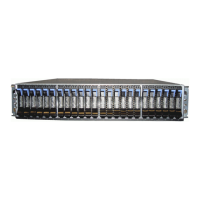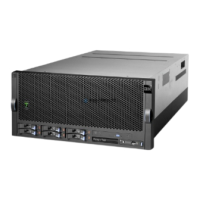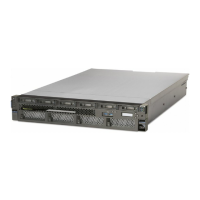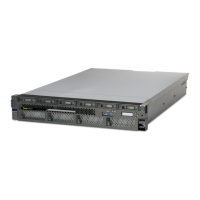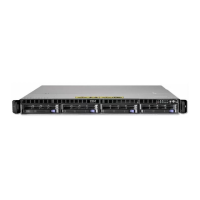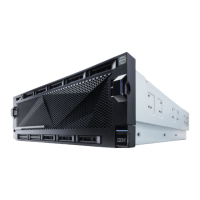If the location code begins with UTMPx, the expansion I/O unit's machine type, model and serial
number have not been set yet and this is a temporary unit identifier. To identify the unit, examine the
display panels on all of the expansion I/O units connected to the server until you find one with the same
characters in the first 5 digits of the top line in the unit's display. Record the unit's real machine type and
model from the unit label. Match the unit's machine type and model in the Unit type and locations table,
and follow the link to determine the service information.
Note: If locations for units are not in the preceding format, either they are not supported or there is a
problem in the firmware. Contact your next level of support.
Physical location codes
Physical location codes provide a mapping of logical functions and components (such as backplanes,
removable modules, connectors, ports, cables, and devices) to their specific locations within the physical
structure of the server.
Logical location codes
If the physical location cannot be mapped to a physical location code, the server's firmware generates a
logical location code. A logical location code is a sequence of location labels that identifies the path that
the system uses to communicate with a given resource.
Note: A resource has as many logical location codes as it has logical connections to the system. For
example, an external tape device connected to two I/O adapters will have two logical location codes.
An example of a logical location code is:
U7879.001.10ABCDE-P3-C31-T2-L23
The first part of the location code (through the T2 label) represents the physical location code for the
resource that communicates with the target resource. The remainder of the logical location code (L23)
represents exactly which resource is indicated.
Location code format
The location code is an alphanumeric string of variable length, consisting of a series of location
identifiers, separated by a dash. An example of a physical location for a fan is Un-A1.
The first position, represented by Un (where n is equal to any string contained between the U and the
hyphen) in the preceding example, is displayed in one of the forms in the following table.
Note: In location codes, the U is a constant digit; however, the numbered positions following the U are
variables and are dependent on your server. Each column defines the numbers that follow the U in the
beginning of the location code.
Machine type and model number in a location code Feature codes and sequence numbers in a location code
Utttt.mmm.sssssss-A1 Uffff.ccc.sssssss-A1
The leftmost code is always U. The leftmost code is always U.
tttt represents the unit type of the enclosure (drawer or
node).
ffff represents the feature code of the enclosure (drawer
or node).
mmm represents the model of the enclosure. ccc represents the sequence number of the enclosure .
sssssss represents the serial number for the enclosure. sssssss represents the serial number of the enclosure.
156 Finding parts, locations, and addresses

